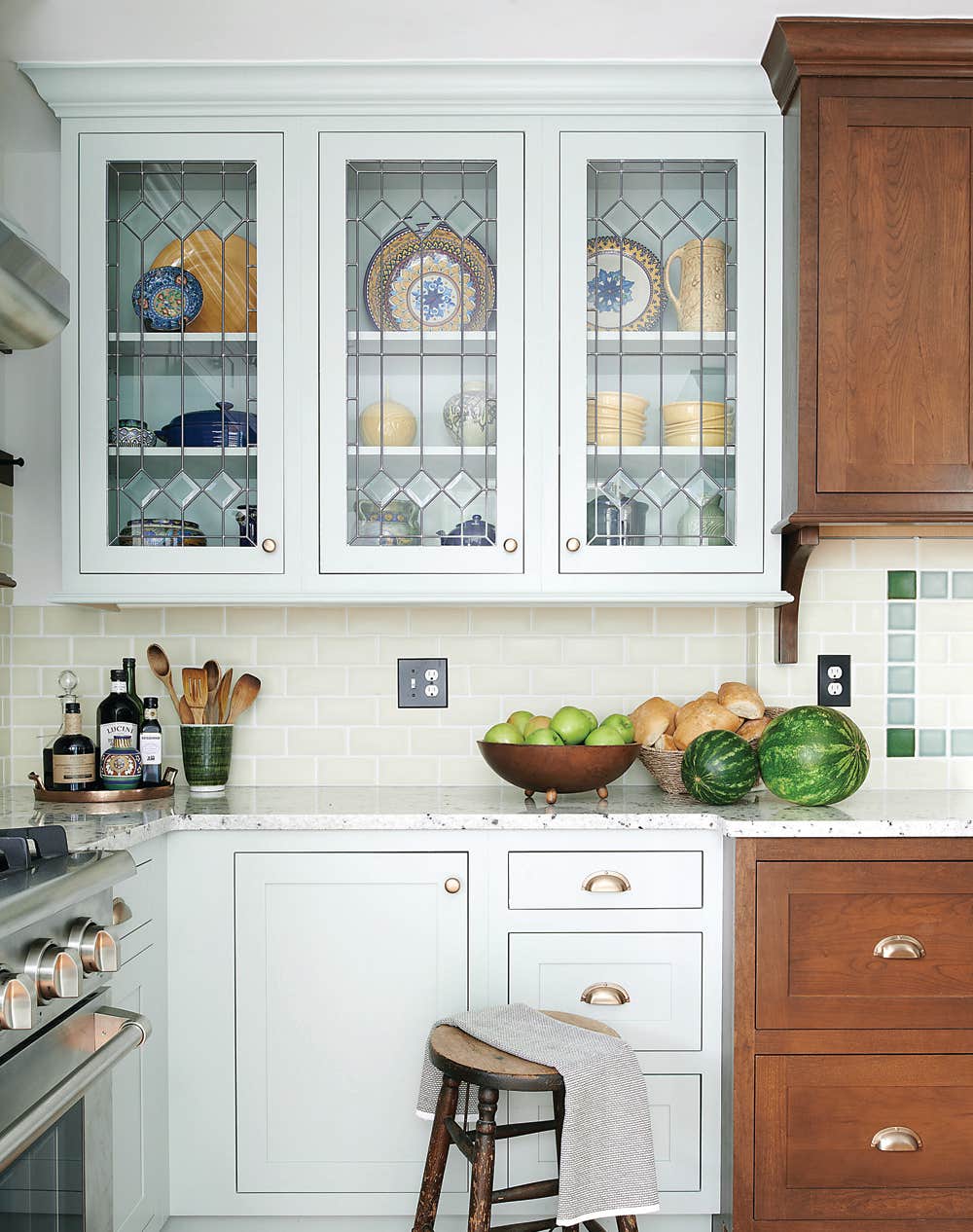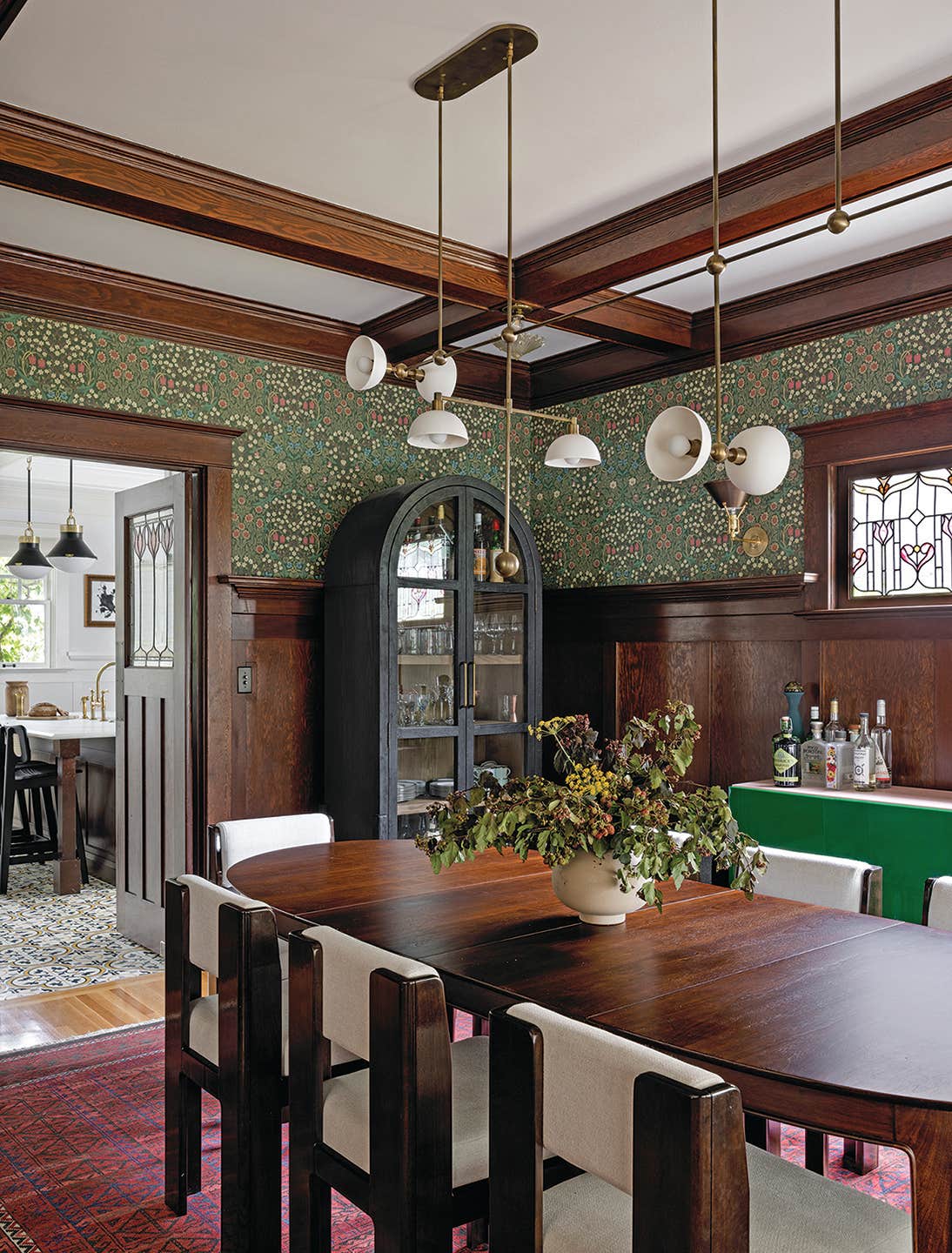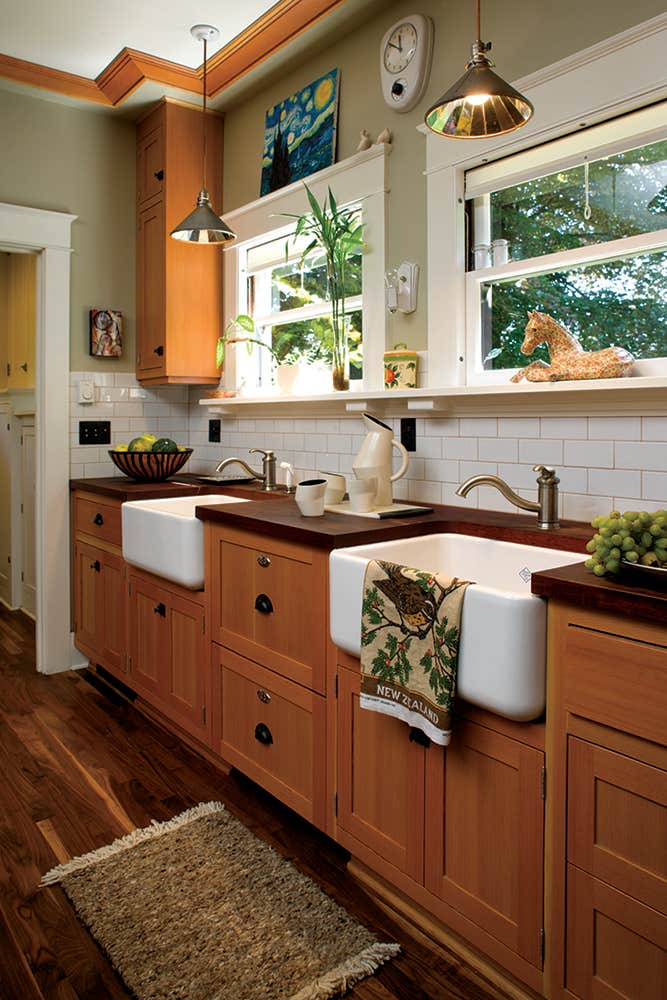A Nostalgic 1914 Bungalow Kitchen
Cued by childhood memories, homeowners in Portland, Oregon, got expert help to re-create a more authentic kitchen in their 1914 Bungalow. With a pantry and restored gas stove, it’s also a practical room.
All photos by Blackstoneedge.com
Robert and Melissa Hogan had already met with a designer from one of Portland’s best-known remodeling companies. But they didn’t see eye to eye: the designer had shaken her head in disbelief when the couple talked of wanting more wood in a period-style kitchen. “Why would anyone want wood countertops or wood floors?” she asked. (Nostalgia, answers Robert, who cherishes the memory of sitting on a little stool in his grandmother’s Southwest Portland home, watching her make custard pies on a wood countertop.)
Then the homeowners met Steve Austin and Cathy Hitchcock (of Austin & Hitchcock Restorations) during a tour of historic kitchens. Melissa and Robert approached them about undoing the kitchen remuddling in their 1914 Arts & Crafts Bungalow. The consultants remember their first visit: Their eyes fell upon a large peninsula that ate up most of the room’s modest square footage; an ugly 1970s gas stove; out-of-place wood-look laminate floors; industrial lighting. Only the 1934 GE Monitor Top refrigerator, which the Hogans had purchased, made them smile. “A sore point for us,” Steve explains, “is the way kitchen designers try—usually unsuccessfully--to hide gigantic refrigerators behind massive cabinet doors.” That would not be an issue here.
“The tendency in period kitchen design,” continues Steve, “is to overdo, because in today’s households, the kitchen is the center of activity. When this house was built, in the early Teens, kitchens were simpler. Guests rarely entered the kitchen.”
Melissa and Robert engaged in lively discussions about budget, convenience, and about “what is authentic?” They marvel at the solutions that evolved. A generic old porcelain sink found in the Hogans’ basement was rejected; it would have cost too much to reconfigure the cabinets for its use. Steve lowered and extended the existing cabinets, and asked the contractor to create simple, period-appropriate doors. They concealed a just-purchased dishwasher in a recess built behind the cabinets.
Robert asked Steve if soapstone sinks were in use in Portland during the early Teens. Steve explained that soapstone sinks have been made since the 1840s, but they were in use mostly in New England (where soapstone is quarried). It was unlikely that someone would have shipped a soapstone sink from Vermont to Oregon in 1914, he said. That prompted the Hogans to create a “back-story” about the family who’d lived in their home. “They were from New England,” posits Robert, “and so they wanted a soapstone sink. And when they got tired of the inconvenience of their icebox, they bought a new GE fridge, in 1934.”
Robert found a rare 1905 Orbon woodstove on eBay for $500. Following Steve Austin’s advice, he paid another $2,000 to have it restored it to its original working order—spending, all in all, about half what the price usually is for a restored stove.
It was a challenge to reach a compromise between desire and authenticity for the wood flooring. Under failing and unattractive linoleum, they’d discovered clear, vertical-grain fir. “Two common floors of the period were linoleum and painted wood,” Steve reports. “But I could see from Robert’s face that he wasn’t happy about letting a paintbrush anywhere near that pretty wood floor.” The Hogans had the fir floor refinished—but not polyurethaned. Instead it was sealed with Waterlox, a linseed oil-based floor finish that lends an old-fashioned glow.
It was Melissa who painted the little mouse on an insert behind the cut-out doors under the sink.
Donna Pizzi is a writer and producer for film and print, and co-owner of Blackstone Edge Studios with her husband, photographer Philip Clayton–Thompson. Over three decades, Pizzi has scouted out and written countless articles about home restoration for Arts & Crafts Homes and Old House Journal.





